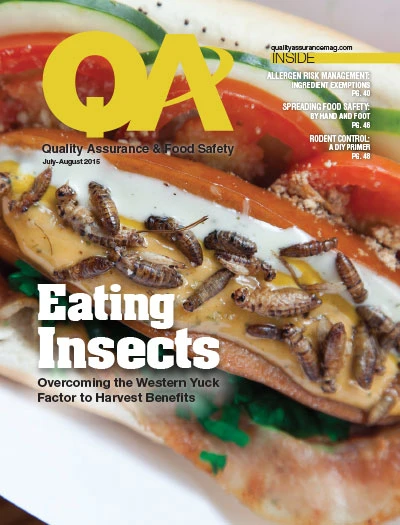Identifying foreign materials and solving consumer complaints is an exciting field in which to be involved. Really!
Food forensics is a unique niche, bringing together microbiological, packaging, analytical chemistry, microscopy, entomology, and other expertise, since no one ever can predict all the types of materials that are allegedly found in food products. Forensic analysis can help protect food companies when accidents occur which could allow a foreign material to enter a food product, and provide scientific support to defend fraudulent claims against their brand. But to do it right, there are a few tips of which food companies should be aware so that samples can be easily processed.
The foremost goal is to positively identify an alleged foreign substance, for which a variety of tools and equipment are used. Then the more challenging portion of the investigation comes in: Did the foreign substance get packed and processed with the food product, or was it added later?
The chances are good for finding a foreign substance in a food item in one’s lifetime, because a foreign substance is defined as anything in a food product that is not on the product label as an ingredient. That means there are nearly endless possibilities for something “foreign” to end up in a food product.
We can’t say we’ve seen it all in the Grocery Manufacturers Association (GMA) lab, but we have certainly seen a lot. Some foreign substances are not unexpected (such as fruit pits or stems). Few would be surprised to see part of an apple seed in an applesauce product, but a portion of a bone in a fresh salad product is another matter.
There are a variety of routes by which samples make it to the lab for analysis: Some food companies will use a retrieval service that goes to the consumer’s home and picks up the foreign substance and associated materials, preferably including the container and remaining food product. The objective is to have as much evidence as possible to draw the best conclusions, and we have found that a professional retrieval service using a supplied shipping kit offers the best scenario.
Some consumers may feel uneasy sending an alleged foreign substance back to the manufacturer, feeling that the material may not actually be tested. A retrieval service can help put the consumer’s mind at ease by creating a transparent link with the testing laboratory. The following are some suggestions for submitting a foreign substance for testing:
For consumer complaints, a third-party testing facility can provide an objective review. Results are based on sound science and analyses. The goal is not to try find something in the food company’s favor or to get a result for the consumer, it is simply to find the facts.
If something did go wrong at the manufacturing facility, the company can use the lab results as part of the root cause analysis to prevent recurrence. Food companies should seek a lab that performs “non-destructive” testing, although a sample may sometimes need to be altered slightly to enable a small sub-sample for testing purposes.
A chain of custody must be established and followed with each exhibit that is logged into the system. An exhibit may have multiple components, such as the alleged foreign substance, remaining food product, the container, and/or unopened containers purchased at the same time as the incident container.

What if a food product was alleged to have caused an illness? Because there’s potential for cross contamination of an opened food product, it will not be tested for illness-causing factors unless permission is given by the food company to do so. Rather, a companion or product retain (same lot code) will be tested, as this sample is assumed to have the same exposure as the incident sample for testing.
The importance of a food product container for completing an investigation cannot be forgotten, in particular when food mold is involved. Packaging expertise comes in handy for locating container damage or defects that can help explain what happened. Additionally, specialized testing is used when there is an indication that an alleged foreign substance was introduced in the customer’s mouth or an injury caused the customer to bleed. For example, the lab may test certain items to see if they were exposed to significant heat.
But even with a comprehensive range of testing, a determination cannot always be made on the presence of a foreign substance in a particular food product. In those cases, we will report only what can be supported through testing and experience.
Some cases may seem too outrageous to be true, but they need to be checked out. In one case, a consumer alleged an injury from glass shards in a food product, and we inspected a well-chewed wad of food that had seven half-inch by half-inch pieces of glass shoved into it. Some may believe it; it’s up to the lab to prove or disprove it, using the scientific tools at our disposal.

Explore the July August 2015 Issue
Check out more from this issue and find your next story to read.
Latest from Quality Assurance & Food Safety
- Hearthside Food Solutions Recalls Breakfast Sandwiches Due to Undeclared Allergen
- Walker’s Wine Juice Recalls Pumpkin Juice Due to Botulism Risk
- The Cascading Food Safety Impacts of Tariffs on the Food Industry
- Tyson Ventures Calls Startups to Apply for Tyson Demo Day
- Student Finalists Selected for IFT Product Development Competitions
- Martin A. Makary Sworn in as FDA Commissioner
- Cargill Kitchen Solutions Recalls Liquid Egg Products Due to Unapproved Substance
- Eagle Product Inspection’s PXT and SimulTask PRO Integrate for Contaminant Detection





